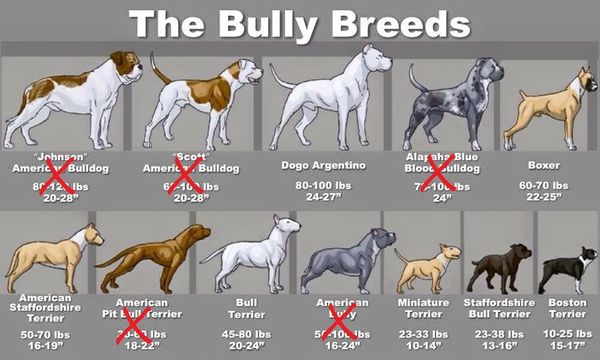By Gaby Dufresne-Cyr, CBT
I want to start off by wishing you a happy new year. May you cross off something on your bucket list and may it include your pet. In this first article of 2016, and I…
Read more
Jan 6 2016
I want to start off by wishing you a happy new year. May you cross off something on your bucket list and may it include your pet. In this first article of 2016, and I…
Read more
Oct 26 2015
By Gaby Dufresne-Cyr, CBT
I'm taking opportunity of the Pitbull Awareness Month's last week to address the public, dog professionals, but more specifically politicians and legislators. I'm going to use the term pitbull in this article only because people…

Oct 6 2015
By Gaby Dufresne-Cyr, CBT
This week I want to explain, or should I say clarify, what is a pit bull. As mentioned last week in Pitbull: A Job Title, the now infamous dog breed is poorly misunderstood, and…

Sep 29 2015

Sep 6 2015
By Gaby Dufresne-Cyr, CBT
Professional recognition is one of my life goals. I believe Dog training and behaviour consultation are at a turning point in history. Too many improvised professionals or outdated practitioners are inadvertently causing harm to animals and…
Read more
Sep 1 2015
By Gaby Dufresne-Cyr, CBT
Over the last twelve years, I've been fortunate enough to have spent time in both zoological and non-zoological training environments, and let me tell you, there's a big difference when it comes to training. This week… Read more
Aug 11 2015
By Gaby Dufrense-Cyr
Lately, I've noticed an increase on social media of anthropomorphic observations of animal behaviour, in other words, people see other people in animals. A dog wants to save a fish's life by tossing water on it, a…

Aug 2 2015
By Gaby Dufresne-Cyr, CBT
In the wake of Cecil the lion, we come to realize he's an ambassador for all living animals. Lions, elephants, rhinoceroses, tigers, cats, and dogs are killed each minute of every day, year-round. What we make…

Jul 28 2015
By Gaby Dufresne-Cyr, CBT
Thousands of articles and books are written each year on how to achieve success. Corporations set examples for young entrepreneurs, but when it comes to animal-related business, do success tips apply or should they be taken…

Jul 21 2015
By Gaby Dufresne-Cyr
Those of you who read this blog every week are used to the Think Outside The Box ideas I write about. Consequently, many of you know I have a learning disability and an eidetic memory. You also…

Jul 14 2015

Jun 1 2015
By Gaby Dufresne-Cyr, CBT
A few weeks ago, we talked about breeding dogs for fashion, not function. The taboo topic is a very sensitive one because it reflects our direct impact on a species we created to serve our specific…
Read more
May 18 2015
By Gaby Dufresne-Cyr, CBT
When I was a kid, we had Great Danes. These majestic creatures were big, bold, and never shied away from all our childish shenanigans. We started with one, then we had puppies, so we ended up…
Read more
May 6 2015
By Gaby Dufresne-Cyr, CBT
When I was in yoga school and attending university, teachers had a saying Observe the Observer. A simple statement which requires years of practice just to understand it's significance. Fortunately for us, dogs live their…

Apr 28 2015
By Gaby Dufresne-Cyr, CBT
Working with animals is extremely rewarding, but it also yields a dirty secret, people in our line of work burn out. We change bad behaviour into good behaviour, we improve the human-animal bond, we teach, we…

Apr 14 2015
By Gaby Dufresne-Cyr, CBT
The hardest part of owning a pet is when we realise our animals don't live forever. We live in such close proximity to our companions that pain felt by their loss is not only profound and…

Mar 3 2015

Nov 13 2014
By Gaby Dufresne-Cyr, CBT-FLE
I normally don't talk about my personal life because I try to keep a professional profile. That being said, today, I want to share myself because of the countless number of times people have told me…
Read more
Oct 29 2014
By Gaby Dufresne-Cyr, CBT-FLE
What is communication?
Dictionaries state:
1. The ability to communicate and establish a relationship with others brings me to the word communicate.
2. To give knowledge and share it with someone.
3. To be in a…

Sep 4 2014
By Gaby Dufresne-Cyr, CBT-FLE
Many years of observation led me to believe that sociability is genetic; that is to say, we are born sociable or not. Instinctively the majority of people believe this statement without having scientific proof to back…

Jul 3 2014
By Gaby Dufresne-Cyr, CBT
The difference between commercially made dog food (kibble) and raw food diets is enormous. In order to understand the differences, one must first know how kibble is made. Dry dog food is made from leftover human…
Jun 11 2014
By Gaby Dufresne-Cyr, CBT
Things you will probably never encounter or read.
- You will most likely never read a book titled "Using Tsit to Modify Speach." A book on how to use and master the pronunciation of "tsit" to…
Read more